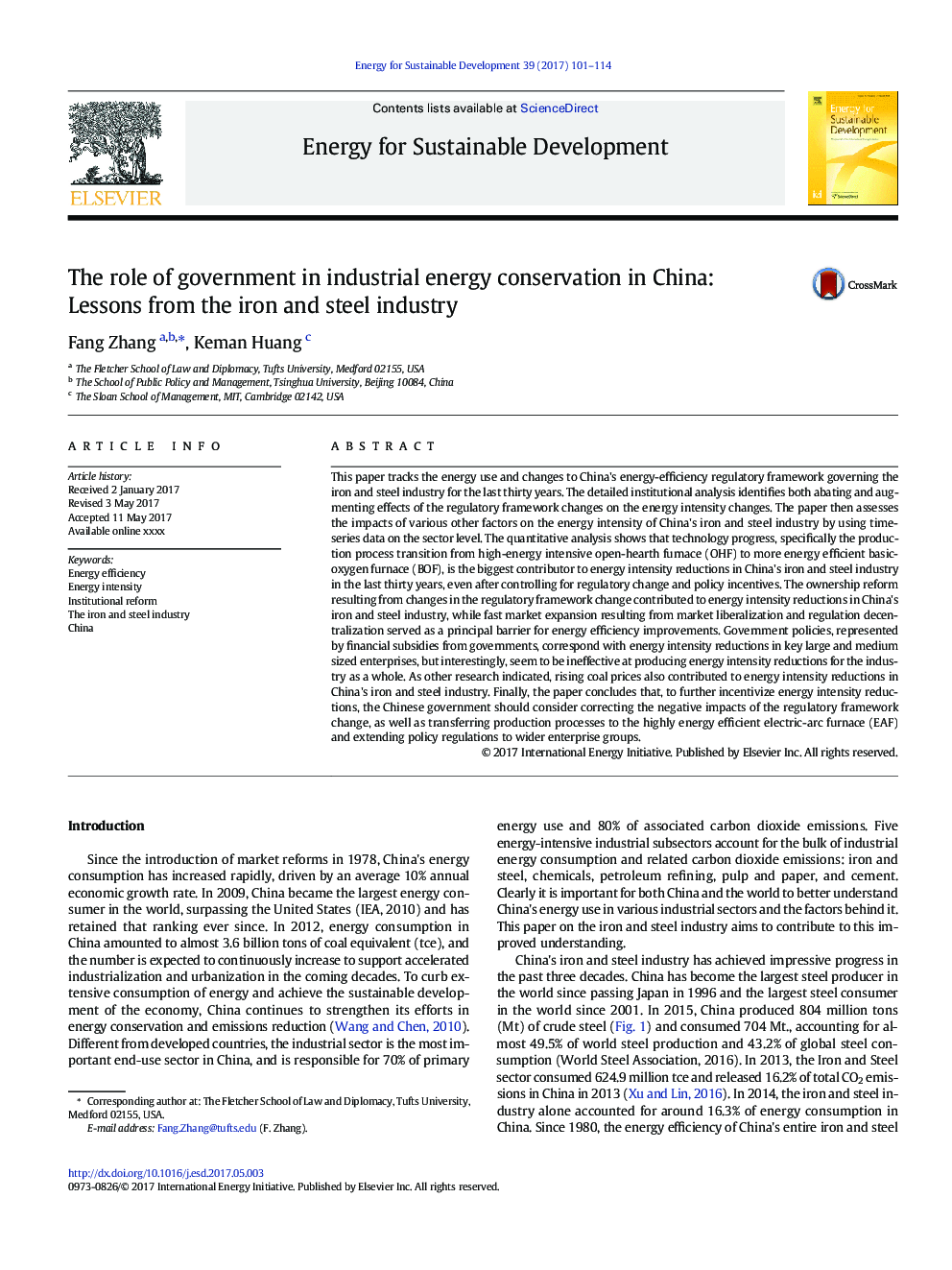| کد مقاله | کد نشریه | سال انتشار | مقاله انگلیسی | نسخه تمام متن |
|---|---|---|---|---|
| 5114360 | 1484391 | 2017 | 14 صفحه PDF | دانلود رایگان |
عنوان انگلیسی مقاله ISI
The role of government in industrial energy conservation in China: Lessons from the iron and steel industry
ترجمه فارسی عنوان
نقش دولت در حفظ انرژی صنعتی در چین: درس های صنعت فولاد و آهن
دانلود مقاله + سفارش ترجمه
دانلود مقاله ISI انگلیسی
رایگان برای ایرانیان
کلمات کلیدی
بهره وری انرژی، شدت انرژی، اصلاحات سازمانی، صنعت آهن و فولاد، چین،
موضوعات مرتبط
مهندسی و علوم پایه
مهندسی انرژی
انرژی (عمومی)
چکیده انگلیسی
This paper tracks the energy use and changes to China's energy-efficiency regulatory framework governing the iron and steel industry for the last thirty years. The detailed institutional analysis identifies both abating and augmenting effects of the regulatory framework changes on the energy intensity changes. The paper then assesses the impacts of various other factors on the energy intensity of China's iron and steel industry by using time-series data on the sector level. The quantitative analysis shows that technology progress, specifically the production process transition from high-energy intensive open-hearth furnace (OHF) to more energy efficient basic-oxygen furnace (BOF), is the biggest contributor to energy intensity reductions in China's iron and steel industry in the last thirty years, even after controlling for regulatory change and policy incentives. The ownership reform resulting from changes in the regulatory framework change contributed to energy intensity reductions in China's iron and steel industry, while fast market expansion resulting from market liberalization and regulation decentralization served as a principal barrier for energy efficiency improvements. Government policies, represented by financial subsidies from governments, correspond with energy intensity reductions in key large and medium sized enterprises, but interestingly, seem to be ineffective at producing energy intensity reductions for the industry as a whole. As other research indicated, rising coal prices also contributed to energy intensity reductions in China's iron and steel industry. Finally, the paper concludes that, to further incentivize energy intensity reductions, the Chinese government should consider correcting the negative impacts of the regulatory framework change, as well as transferring production processes to the highly energy efficient electric-arc furnace (EAF) and extending policy regulations to wider enterprise groups.
ناشر
Database: Elsevier - ScienceDirect (ساینس دایرکت)
Journal: Energy for Sustainable Development - Volume 39, August 2017, Pages 101-114
Journal: Energy for Sustainable Development - Volume 39, August 2017, Pages 101-114
نویسندگان
Fang Zhang, Keman Huang,
